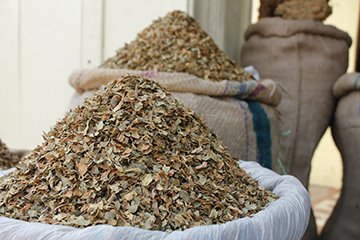Substitutes in Tobacco Expansion
Under Title VI of the Clean Air Act, the SNAP program identifies and evaluates substitutes in end-uses that have historically used ozone-depleting substances (ODS). SNAP listings of acceptable alternatives can also help sectors transition away from high global warming potential hydrofluorocarbons (HFCs) addressed under the American Innovation and Manufacturing (AIM) Act including its Technology Transitions Program. For example, some substitutes that are listed as acceptable under the SNAP program, starting with the first SNAP rulemaking in 1994, might be subject to more recent restrictions established under the Technology Transitions Program. For detailed information on specific restrictions and guidance, please refer to the Technology Transitions Program.
Tobacco expansion is the process of puffing leaves of tobacco to decrease the volume of tobacco used in cigarette production. Substitutes are reviewed on the basis of environmental and health risks, including factors such as ozone depletion potential, global warming potential, toxicity, flammability, and exposure potential. Lists of acceptableThis designation means that a substitute may be used, without restriction, to replace the relevant ODS within the end-use specified. For example, HCFC-22 is an acceptable substitute for R-502 in industrial process refrigeration. Note that all SNAP determinations apply to the use of a specific product as a substitute for a specific ODS in a specific end-use. and UnacceptableThis designation means that it is illegal to use a product as a substitute for an ODS in a specific end-use. For example, HCFC-141b is an unacceptable substitute for CFC-11 in building chillers. Note that all SNAP determinations apply to the use of a specific product as a substitute for a specific ODS in a specific end-use. substitutes are updated several times each year.
Note: SNAP-related information published in the Federal Register takes precedence over all information on this page.
| Substitute | Trade Name(s) | ODPA number that refers to the amount of ozone depletion caused by a substance. The ODP is the ratio of the impact on ozone of a chemical compared to the impact of a similar mass of CFC-11. Thus, the ODP of CFC-11 is defined to be 1.0. Other CFCs and HCFCs have ODPs that range from 0.01 to 1.0. The halons have ODPs ranging up to 10. Carbon tetrachloride has an ODP of 1.2, and methyl chloroform's ODP is 0.11. HFCs have zero ODP because they do not contain chlorine. A table of all ozone-depleting substances (http://www.epa.gov/ozone/science/ods/index.html) shows their ODPs, GWPs, and CAS numbers. | GWPThe index used to translate the level of emissions of various gases into a common measure in order to compare the relative radiative forcing of different gases without directly calculating the changes in atmospheric concentrations. GWPs are calculated as the ratio of the radiative forcing that would result from the emissions of one kilogram of a greenhouse gas to that from the emission of one kilogram of carbon dioxide over a period of time (usually 100 years). Gases involved in complex atmospheric chemical processes have not been assigned GWPs. See lifetime. | Flammable | SNAP Listing Date | Listing Status | Further Information |
|---|---|---|---|---|---|---|---|
| Carbon Dioxide | 0 | 1 | No | March 18, 1994 | Acceptable | New equipment only. | |
| Propane | 0 | 3 | Yes | March 18, 1994 | Acceptable | Propane tobacco expansion is a patented process. Flammability may be of concern for workers. Major sources of VOC emissions are subject to the New Source Review (NSR) program under the CAA. |

